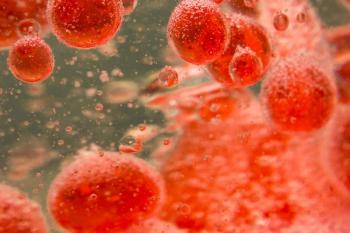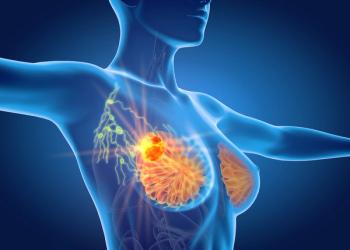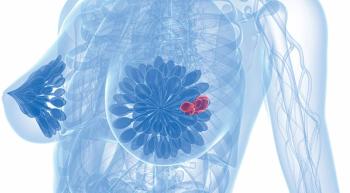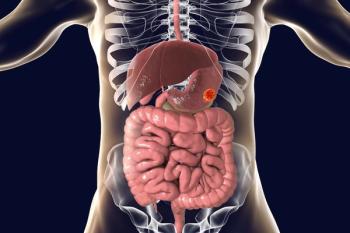
An Oncodermatologist’s Perspective on Dermatological Toxicities in Breast Cancer
Onco-dermatology enhances patient care and quality of life by addressing skin toxicities in breast cancer treatments through expert management and collaboration.
"Before [onco-dermatology] was created, skin toxicities, among other things, were one of the most common reasons that cancer-related therapies were stopped,” Allireza Alloo, MD, said in a recent interview with CancerNetwork®.
As patients receive treatment for breast cancer, whether it is chemotherapy or targeted therapy, toxicities will occur. Among these toxicities, dermatologic adverse events (dAEs) affect many and may require specialists to be properly managed.
Alloo, a clinical associate professor in the Department of Medicine at New York University (NYU) Grossman Long Island School of Medicine and the medical director of the Division of Dermatology at NYU Langone Hospital Long Island, is one of those experts.
Alloo discussed topics ranging from the dAEs that occur with various treatments to the importance of maintaining optimal communication and collaboration with other care providers.
Why are dAEs such an important consideration during breast cancer treatment?
Alloo: dAEs are important in any cancer because of how common they are and how much they can impair a patient’s quality of life. That can then have impacts on their ongoing cancer treatment. We’re fortunate that new cancer treatments that improve survival are [being developed], but with a lot of these targeted agents and immunotherapies, the primary AEs occur on the skin.
Because these toxicities are outward facing, people can see them. They often impact self-image and quality of life. That’s one of the things that we think about when we care for our [patients with cancer].
What dermatologic toxicities are most associated with chemotherapy agents, such as taxanes?
The nonspecific cutaneous AEs that we can see from taxanes are hair loss or alopecia. We also see certain types of nail changes, specifically hyperpigmentation or darkening of the nail plates. We sometimes see lifting of the nail plates, and that lifting can make you more prone to infections of the nail. Then there are other specific types of reactions where patients can get rashes on the backs of their hands or dorsal hand-foot syndrome. Patients can get thickening of their skin; we call that scleroderma-like changes.
In terms of alopecia, there’s evidence showing that scalp cooling, or cooling caps, can be very helpful for the prevention of hair loss. Then, when people have hair loss, you can use minoxidil [Rogaine] 5%. There have been studies that show that, with the use of minoxidil in this cohort of patients, they regrow their hair faster. It’s important to preempt some of these [discussions about nail changes] by talking about supportive nail care. Keeping your nails short and trying to wear gloves can minimize some of these complications.
What dermatologic toxicities are most associated with targeted therapies?
You can get the classic types of rashes that are nonspecific—morbilliform or maculopapular rash—where people are just getting rashes on their skin. But other things that we can see from the [PI3K-targeted therapies] are rashes that look like psoriasis, rashes that look like eczema, and rashes that look like pityriasis rubra pilaris.
With the CDK4/6 inhibitors, we see specific rashes like eczema. We also see that sometimes people develop vitiligo with those inhibitors.... Both of these treatments can sometimes be associated with more severe reactions, like Stevens-Johnson syndrome. Lastly, stomatitis is something that’s often seen with these targeted therapies.
Depending upon the amount of surface area, we typically can give people topical steroids that they can use to treat [dAE] and improve their baseline skin care, with some of the things that they use to moisturize and bathe. [For] people who have very severe reactions to these targeted therapies—patients who have psoriasiform or a psoriasis-like rash from a PI3K inhibitor—we can then give them specific psoriasis medicines, which often can be used in the context of concurrent treatment.... Similarly, with eczema or vitiligo, there are systemic agents for eczema that we can give, like [dupilumab (Dupixent)], which help manage these types of rashes.
What red flags should a provider look for when evaluating a patient being treated for breast cancer?
You’re looking for a couple of things. You’re looking for how much body surface area is involved. Do they have any skin pain, any blistering, and any mucosal involvement, so any involvement in the mouth, the eyes, or the groin? That typically suggests something more severe, such as fevers, other systemic symptoms, and signs of infection. All of these characteristics are things that usually raise the antenna a little bit and get us thinking more about a severe or a more distressing toxicity. I would be watching out for [the involvement of] extensive body surface area and systemic symptoms like fever, skin pain, the involvement of mucosal sites, or any skin blistering.
Do any dAEs stemming from breast cancer treatments stand out as notable?
Because we see stomatitis with a lot of these specific breast cancer targeted agents, it sometimes can be a little bit tricky and concerning. But the tempo and progression of these rashes are very important because a lot of them can be treated topically. What we do know from the literature is that a lot of these are not significant.... It’s important to watch these patients over time.
How do you determine when the risk of continued treatment outweighs the benefit?
There are different types of activities of daily living [ADLs]. There are instrumental ADLs, like getting around, going shopping, and things of that nature, which are day-to-day activities. Then there are self-care ADLs...like buttoning your shirt and using your hands to eat. If we know that a toxicity is very extensive and involves a significant body surface area or if it’s affecting your ADLs, that typically gets us into that category where we have to question if the medicine is doing more harm than good and if we can modify the medicine, in terms of its frequency or dose, to allow patients to have [fewer] of these AEs.
How can a strong level of collaboration between the medical oncology team and the onco-dermatology team to mitigate and care for dAEs be maintained?
The biggest thing is having an understanding of supportive onco-dermatology and having multidisciplinary communication and an understanding of how nondermatologists can assess their patients, especially if they’re on one of these targeted therapies or immunotherapies. The sooner that we can assess them, the sooner we can get treatment started.
Having a good infrastructure to allow referrals [is important]. At our institution, we have e-consultations. If we can’t get [a patient] an appointment, they can send us an electronic consultation where we can evaluate pictures, give our thoughts, and then get the patient seen in a timely fashion. Having that referral mechanism is very important.
The other thing that goes without saying is also involving the patient in their care. It’s very important to have handouts or different patient education tools that you can use so that patients know what to expect, as it relates to their drug, whether it’s a skin toxicity or a nonskin toxicity. Having that education is important.
What patient education, tools, and methods can be used to ensure early and accurate dAE reporting?
We have great clinician-derived outcome measures, but we have no great patient-reported outcome measures. We try to use [measures] that have been developed for other conditions, but this is an open area where we’re constantly looking to improve. [Patients need to] have a mechanism to report what’s happening, either to their doctor or to their team, so we can constantly document how things are going. That is the first step to getting to some type of universal patient-related outcome tool. We now have strategies so patients can see skin experts. Every academic center typically has somebody like me who understands this and can treat these patients while they’re getting treatment. We don’t take them off their treatment; they can continue to improve.
Newsletter
Stay up to date on recent advances in the multidisciplinary approach to cancer.

















































































